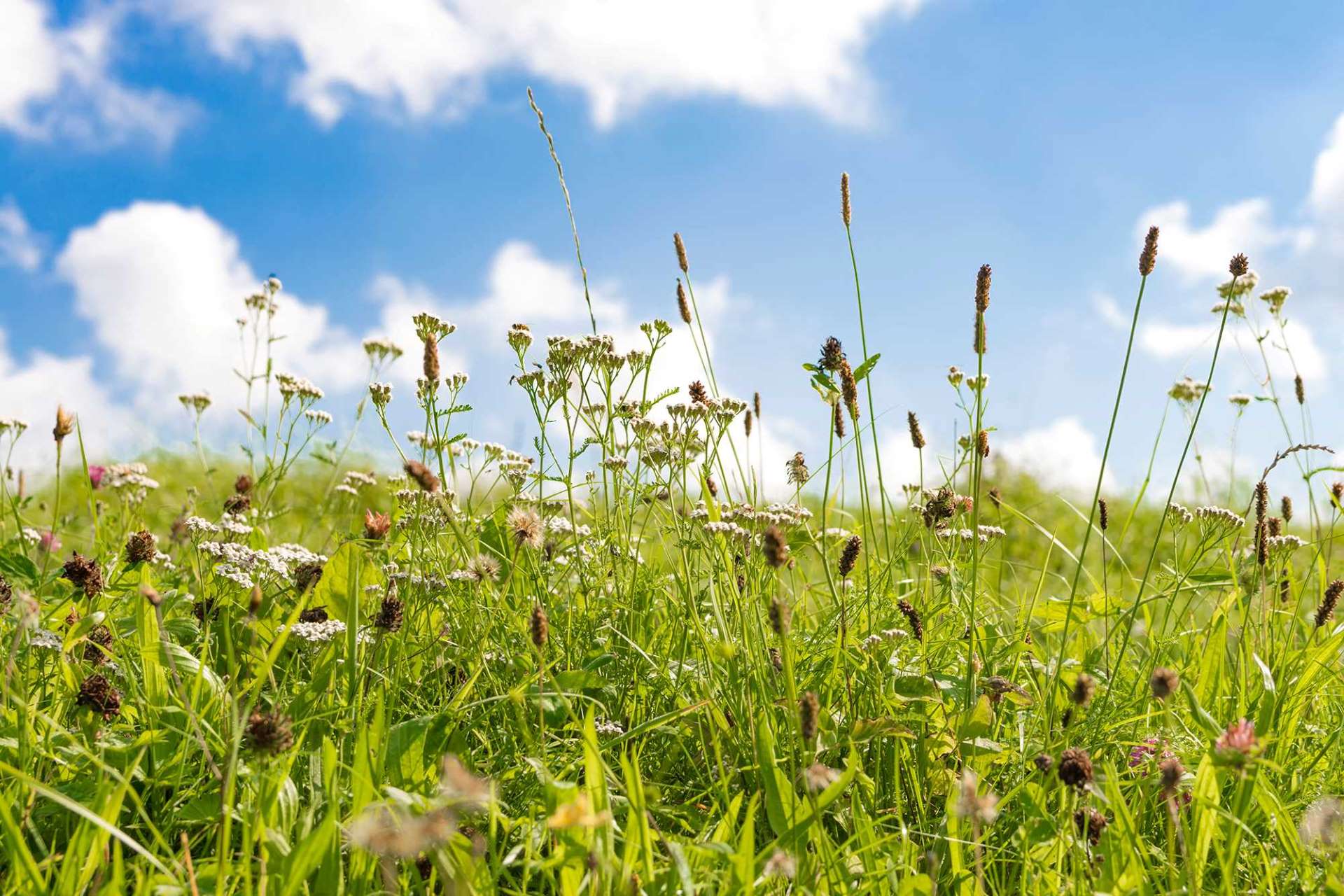For this month’s climate theme, we are focusing on health. In this blog post, we’re discussing pollen, the impacts that it can cause for hay fever sufferers, and whether a changing climate will influence pollen levels throughout the year.

Pollen and hay fever
Respiratory allergies are more common than ever, and recent studies in Europe have found that some pollen types are increasing in severity, season duration and seeing an earlier onset as a result of climate change.
Pollen is made up of tiny particles which are released by plants and trees as part of their reproductive cycle. When inhaled, pollen can cause significant irritation and inflammation in people or animals who are allergic to it.
Hay fever symptoms usually appear when the pollen count reaches moderate or high, depending on the individual’s sensitivity to the pollen allergens. 11% of UK adults suffer from severe hay fever and common symptoms include sneezing, runny or blocked nose, and itchy eyes, mouth and throat.
How weather and the seasons affect pollen levels
Rain, wind, temperature and sunshine all affect how much pollen will be produced and how much it will be dispersed. On warm, dry days with gentle to moderate winds, pollen spreads easily but on rainy days, pollen can be cleared from the air. On sunny days, the pollen count is highest in the early evening which is therefore when you are most likely to suffer from hay fever symptoms.
Seasonality and pollen
As well as the weather at the time of pollen dispersal, there are seasonal weather patterns that change things. We know that, on a daily basis, any rainfall decreases pollen, but a warm spring with sufficient rain will allow for good pollen production in grasses and the potential then for high summer pollen counts.
Conversely, very dry weather in spring suppresses pollen production in grasses, reducing the potential, and very hot and dry weather actually prevents grasses from growing at all. For tree pollen, the production occurs in the catkins in the previous summer and if June and July are very warm, then there will be more pollen produced. This is happening more frequently due to climate change increasing the summer temperatures.

The influence of climate change on UK seasons
The UK has a temperate maritime climate which means that we generally have a cool and mild climate with changeable weather. As a result of climate change however, we can expect to see some changes to the weather we see in the UK. In the future, whilst we will still see a lot of the same weather that we experience today, the intensity of some weather types will change. Across the UK, we are already seeing and expect that we will continue to experience:
- Warmer and wetter winters
- Hotter and drier summers
- More frequent and intense weather extremes
Research to explore the climate change/pollen link
A recently conducted study looked at pollen trends in the UK over the last 26 years to better understand the relationship between these trends and meteorological factors. Led by the University of Worcester, the study examined a range of UK pollen sites, with a focus on the key pollen types: grass, birch and oak.
The results of the study revealed a somewhat mixed picture of how different types of pollen are affected by climate change. One of the key findings was the fact that oak and grass pollen seasons are starting earlier, and the birch season is getting more severe. The study also highlighted how increasingly unusual weather – as a result of climate change – coincided with increasingly erratic pollen seasons. It was also noted that a trend to lower wind levels is reducing dispersal of grass pollen grains in the summer.
Dr Beverley Adams-Groom, senior pollen forecaster at the University of Worcester and lead author of the study, said: “Climate change is impacting on seasons. It’s difficult to predict the long-term future as there are many factors at play. What we do know is that there are going to be more extreme weather events – that’s documented, and that can impact on the seasons.”
The future? More pollen unpredictability
Whilst the study findings may not indicate a drastic influence from climate change in terms of increasing pollen levels, what is clear is that if the current climate trajectory remains the same, the trends that have been identified are expected to continue.
Climate change will very likely cause increasingly erratic and unpredictable seasons and weather patterns. The biggest defence for hay fever sufferers is to be prepared, something which these changes caused by climate change will make more difficult.
We are already seeing the impacts of climate change, including on pollen, and change will continue to occur. We can still mitigate against the worst impacts, however, by rapidly reducing emissions.
In addition to our daily weather forecasting services, we provide pollen forecasts for five days ahead across the whole of the UK during the pollen season. These forecasts are produced by combining data from the pollen count monitoring network with Met Office weather data and expertise from organisations such as the National Pollen and Aerobiological Unit. You can learn more about our pollen forecasts and find advice on preparing for and managing the symptoms of hay fever on our website.


